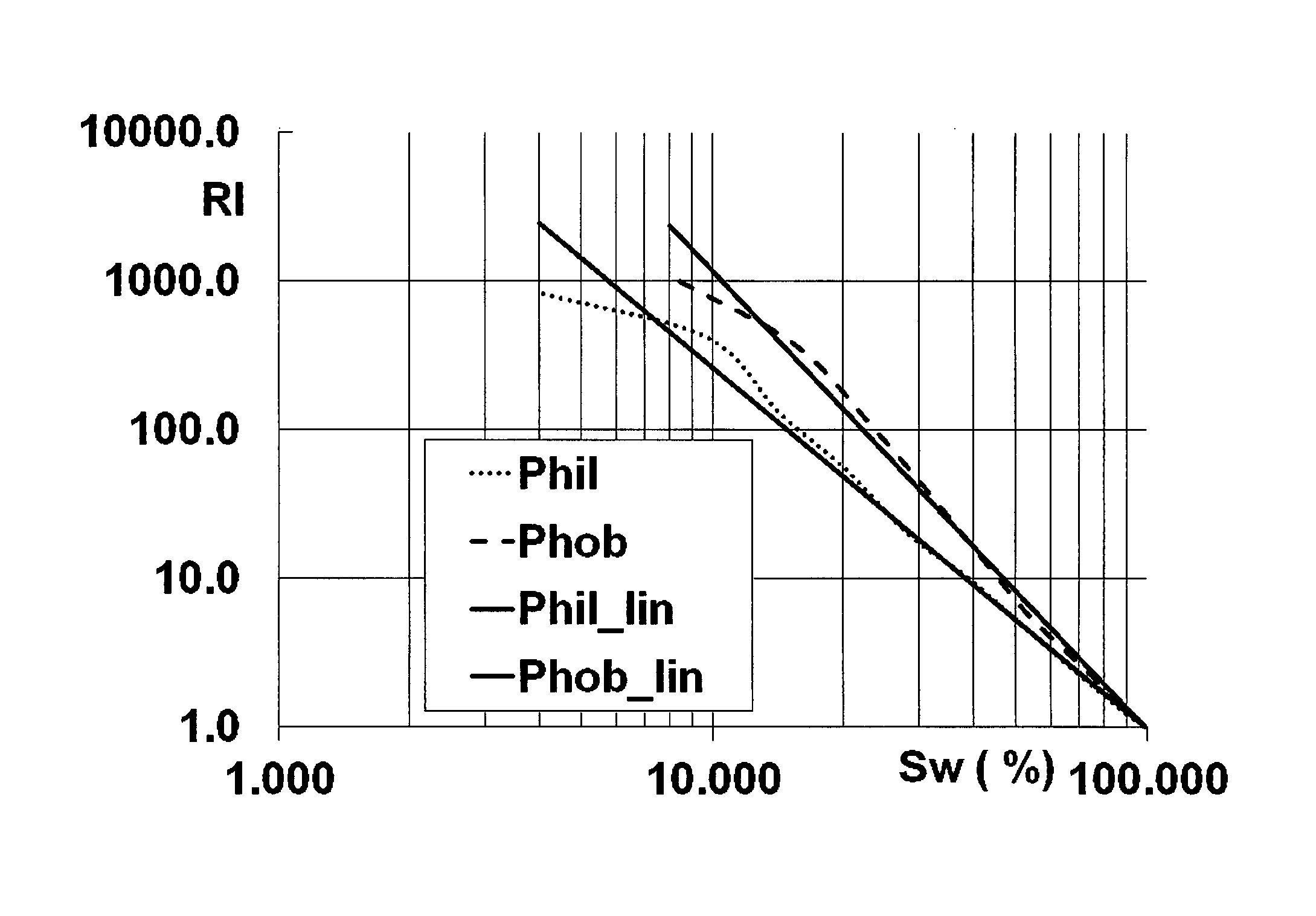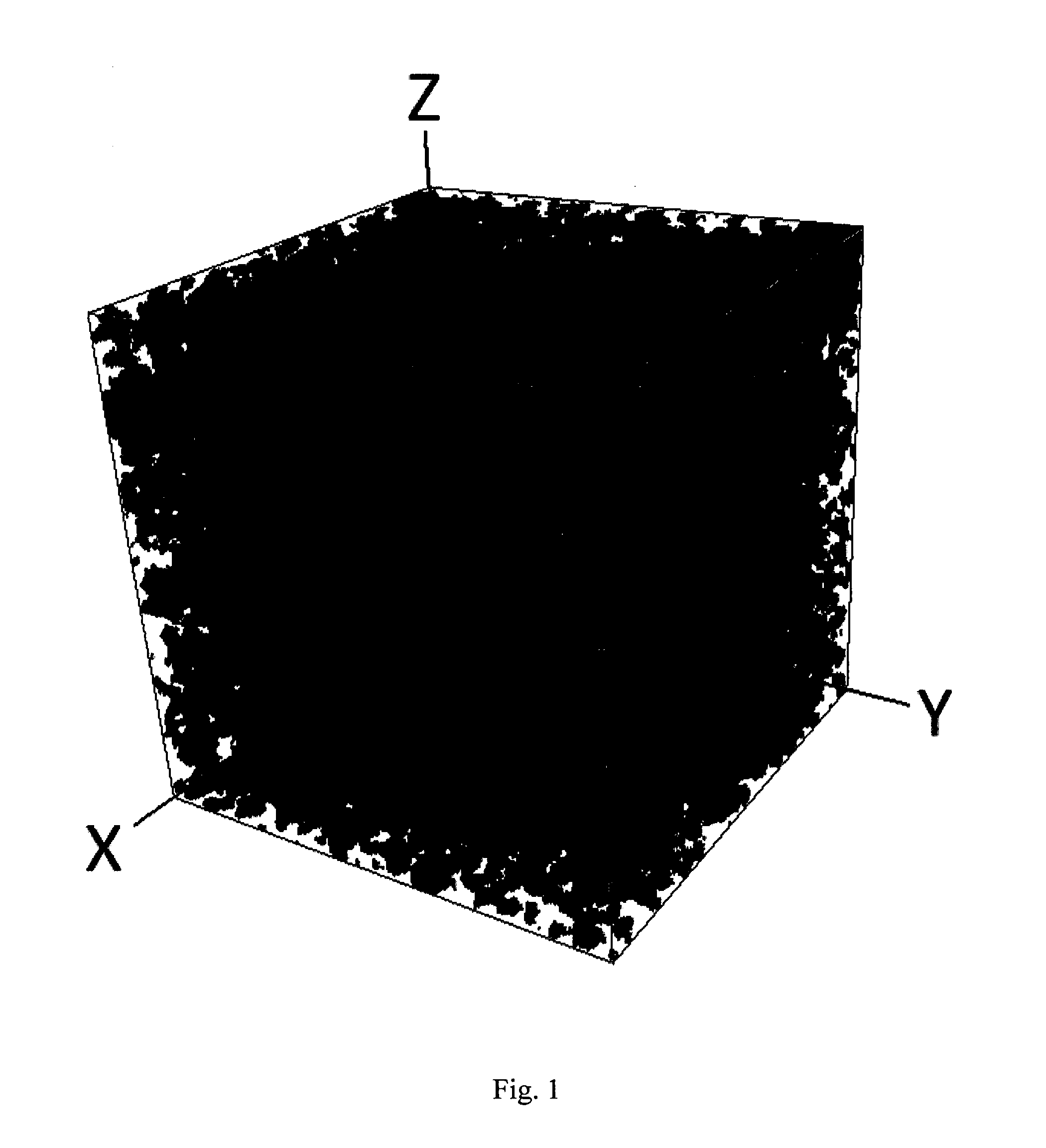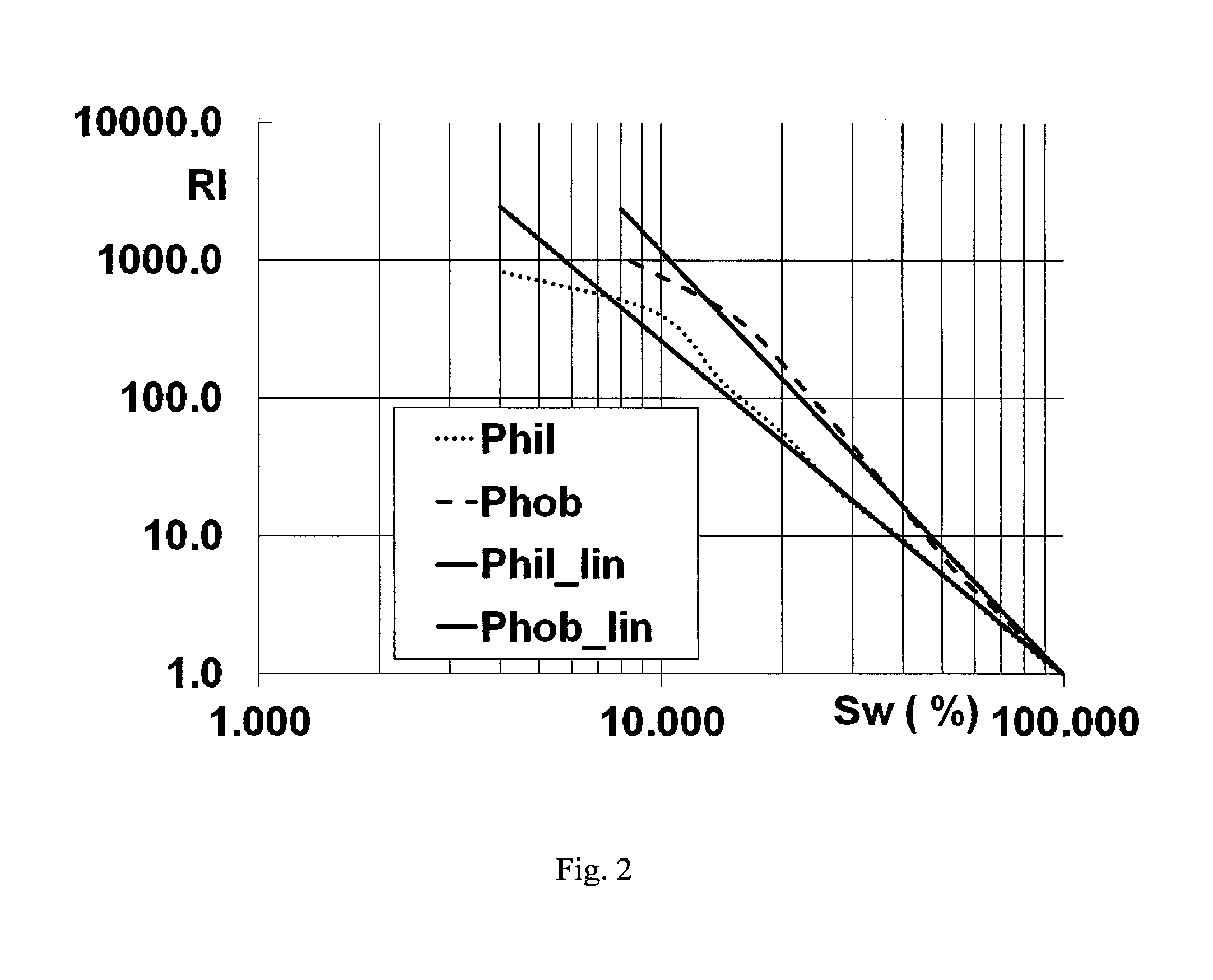Method for estimating petrophysical properties of a hydrocarbon reservoir
a hydrocarbon reservoir and hydrocarbon technology, applied in the field of hydrocarbon reservoir characterization, can solve the problems of uncertainty, lack of direct, and insufficient collection of core samples
- Summary
- Abstract
- Description
- Claims
- Application Information
AI Technical Summary
Benefits of technology
Problems solved by technology
Method used
Image
Examples
Embodiment Construction
[0019]A detailed description is provided for one embodiment of the invention, which demonstrates typical steps of our workflow in case of interpretation of well resistivity measurements in terms of water saturation distribution for the oil reservoir.
[0020]A core sample with typical petrophysical properties is obtained from a wellbore traversing a hydrocarbon reservoir. The core sample may be obtained by drilling at a selected depth and extracting a core sample.
[0021]A 3D porous solid image of the core sample is obtained by scanning the core sample. A 3D porous solid image is a 3D digital representation of the core sample. Specifically, the 3D porous solid image is an image of each portion of the core sample including pores and solid surfaces. Thus, the 3D porous solid image may show pores and rock boundaries of the core sample for each layer of the core sample. Obtaining the 3D porous solid image may be accomplished by scanning the core sample. For example, X-ray micro tomography, 3...
PUM
| Property | Measurement | Unit |
|---|---|---|
| cell size | aaaaa | aaaaa |
| 3D pore scale model | aaaaa | aaaaa |
| pore structure | aaaaa | aaaaa |
Abstract
Description
Claims
Application Information
 Login to View More
Login to View More - R&D
- Intellectual Property
- Life Sciences
- Materials
- Tech Scout
- Unparalleled Data Quality
- Higher Quality Content
- 60% Fewer Hallucinations
Browse by: Latest US Patents, China's latest patents, Technical Efficacy Thesaurus, Application Domain, Technology Topic, Popular Technical Reports.
© 2025 PatSnap. All rights reserved.Legal|Privacy policy|Modern Slavery Act Transparency Statement|Sitemap|About US| Contact US: help@patsnap.com



